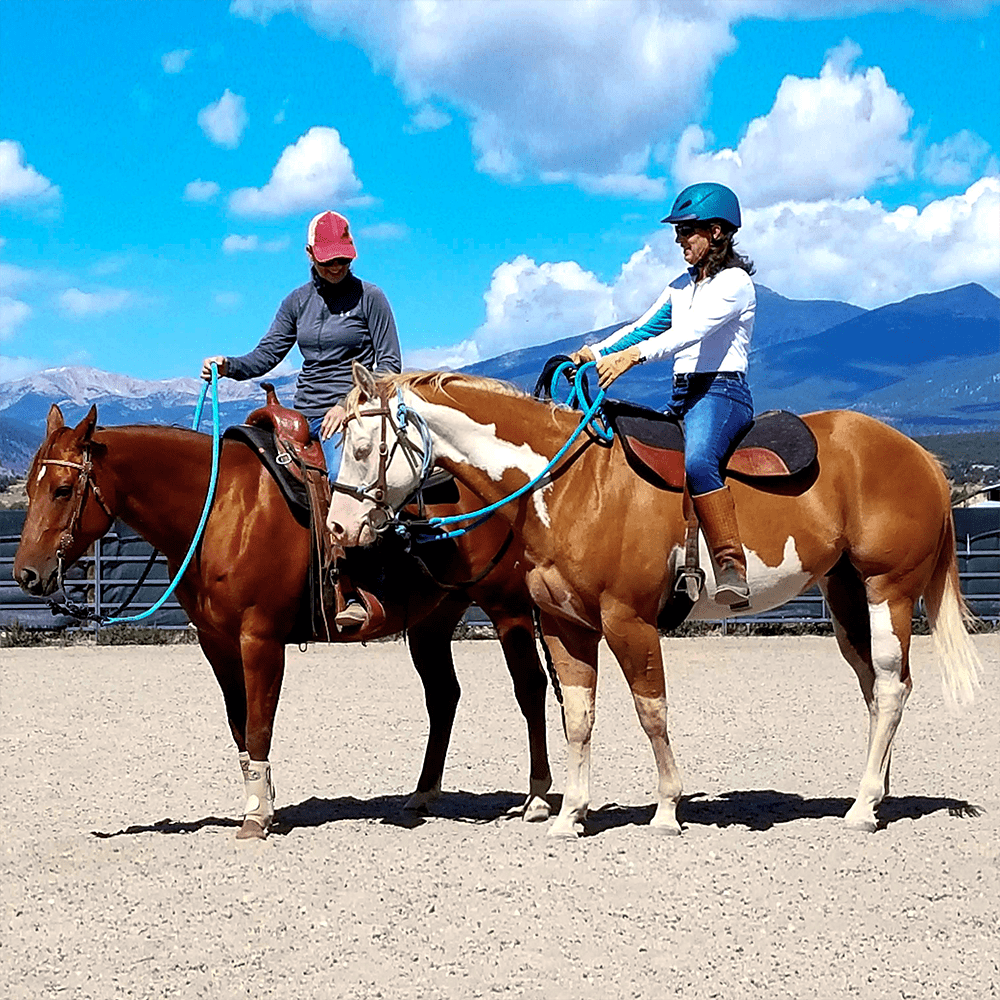Common Complaints
Help! I Can’t Catch My Horse!
Want to catch your horse easily when retrieving him from pen or pasture? Follow Julie Goodnight’s behavior and training advice HERE to help your horse be respectful and worthy of praise.
Does your horse throw his tail over his back, running to the far end of the pasture when he sees you approach? Do you have to sneak up on him with his halter hidden stealthily behind your back and your pockets packed with carrots? Do you engage in a game of cat and mouse, chasing your horse into a corner, dodging back and forth until he makes a hasty retreat, nearly running you down in the process?
If any of these scenarios describes your normal catch routine you’ve become an unwitting pawn in your horse’s game of stump-the-owner. Let’s take a look at the hard-to-catch horse and how to cure this undesirable behavior. Here, we’ll discuss why your horse may avoid the catch and you’ll understand what you can do to stop the frustrating process.
The Reason
Horses love to play games. They are quick to learn how to manipulate you, the human, into playing along. Your horse may be reacting to movements you don’t even know you’re making. On the other hand, you may be reacting to movements your horse is making. The latter means that your horse is in charge and making the rules.
Because horses are prey animals, they are programmed to mirror the emotions of animals around them. For that reason, they are very tuned-in to human emotions; they easily recognize your emotions. Frustration and aggravation are easy for them to detect—and therefore horses quickly learn to manipulate. If your emotions aren’t in check and you’re ultra reactive, you’ll soon have a horse that pushes your buttons and gets an emotional response from you. Game over, horse wins. Emotionality has no place when you’re training horses.
Horses are so keen to your level of intention and determination that they can learn how to get what they want from you in one session. That said, they can also learn in one session, that you are not a pawn. You’ll have to master the art of being cool, calm, patient but persistent, so that your horse can’t engage you in his games. Armed with that attitude and this simple process, you can permanently cure your hard-to-catch horse in just a few days. It’s time to get started.
The Solution
To convince your horse that his antics are futile you’ll need to “walk him off.” Put on a pair of comfortable walking shoes and allow yourself plenty of time (you shouldn’t need more than an hour). Walk out into the pasture/pen with halter in hand (don’t try to hide it) and adopt an expression that says, “I am going to catch you come hell or high water—even if it takes me all day.”
Walk straight towards your horse’s head. Look him straight in the eye with a look of steel-hearted determination. Do not chase him, herd him or try to corner him; those are games horses love and are much better equipped to play. Be patient but persistent; always looking at him and heading straight toward his head. I sometimes stalk him in an angle that drives him away from the herd or from the place he most wants to be. When I separate a horse from the herd or his comfort zone, I’m setting the rules.
Know that your horse probably will run off with his tail up in the air. He’ll most likely stop and look back at you. Keep walking toward his head. He’ll become frustrated to see that you’re still coming and are still determined. You’re applying mental pressure to help him know you’re in charge and that this isn’t game time. When your horse can no longer take the mental pressure, he’ll stop and face you with his head hung low—your company will be much more comfortable than the constant pressure he feels during your walk.
The most disrespectful horse I ever walked-off took 45 minutes to turn and face me. Be patient and wait for the transition. This is a critical juncture.
When your horse stops, faces you and drops his head, it’s time to stop walking and turn your back to him. This body language—much like that used in round pen work—will release the mental pressure your horse feels. Your horse will feel a release—that’s his reward for exhibiting the correct behavior.
Next your horse may walk toward you. If he doesn’t, take a relaxing breath then approach him slowly and casually—with your eyes down and your shoulders angled away from him. Make sure your body language is dramatically different from the pursuing posture you used when starting your walk; non-threatening posture with eyes deflected and shoulders down. If your horse runs off again, lock in your assertive posture and begin walking toward him—you’re on a mission again. Repeat the walk and retreat steps until your horse approaches you or willingly allows you to approach him.
When you can walk close to your horse, put on his halter and lead him a few steps. Then pet him and let him go.
Repeat the process 24 hours later. When you go to catch your horse, you should find it takes less time. If you were patient with your horse on day one, you proved you were in charge and that the easiest place to be is with you. Don’t worry if it takes a few days before your horse meets you at the gate when you approach with his halter. Keep repeating the process. It will work.
If your horse has been difficult to catch, he may be exhibiting other disrespectful behaviors, too. To learn how to teach your horse other important ground manners, check out the DVD, Lead Line Leadership and other training tools at Shop.JulieGoodnight.com.

